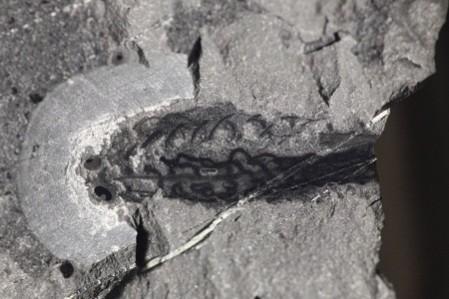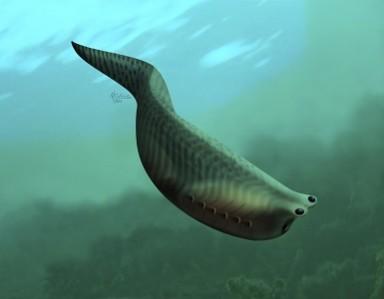
A tiny jawless fish fossil has been discovered by researchers close to Burgess Shale site in the Canadian Rockies. The fish lived half a billion years ago and is now paving way for the scientists on the early living vertebrates.
Researchers on Wednesday, 11 June showed around 100 fossil specimens of a fish called Metaspriggina that could be the ancestor to most of the living vertebrates. The primitive body has characteristic gill structures that most likely developed into jawbones among the living jawed vertebrates, according to the researchers.
"For the first time, we are able to say this is really close to this hypothetical ancestor that was drawn based on a study of modern organisms in the 19th century," Live Science quoted study co-author Jean-Bernard Caron, a palaeontologist at the Royal Ontario Museum in Toronto, Canada.
The fish lived about 543 million years ago during the Cambrian Period. Researchers had previously found two portions of specimens but the latest one revealed details regarding the earliest known vertebrates.
Researchers believe that creatures like Metaspriggina first evolved and started the family of vertebrates and later jawed fishes, reptiles, amphibians, birds and mammals including human beings joined the chain.
"It allows an understanding of where we come from and what our most distant relatives might have looked like. Because of its great age - more than half a billion year old - Metaspriggina provides a deep down view at the origins of the vertebrates." Reuters quoted Jean-Bernard Caron, a palaeontologist at the Royal Ontario Museum in Toronto.

Metaspriggina was a jawless soft-bodied fish about 6 cm in length. It had narrow but tapering body and had a pair of large eyes and tiny nasal sacs atop its small head.
Further, the researchers explained that the fish possessed a skull made of cartilage and notochord that provided support to the body like how backbones support among later vertebrates but they are unclear if the fossil had fins.
It also possesses seven pairs of rod-like structures called branchial or gill arches, to filter food particles and to respire. With the evolution of vertebrates, scientists have known the importance of these arches.
"Metaspriggina is important because it both fills an important gap in our understanding of the early evolution of the group to which we belong, but in particular shows with remarkable clarity the arrangement of the so-called branchial arches," said Simon Conway Morris, palaeontologist at University of Cambridge.
"Part of the jaw bones eventually evolved into tiny middle ear bones in mammals, the evolution of these arches had a profound impact on how vertebrates look, live and function today," Caron added.
Fishes, birds and humans are some jawed vertebrates constituting 99 percent of the vertebrates on Earth. But until now, scientists were not sure about how and when jaws first evolved.

















